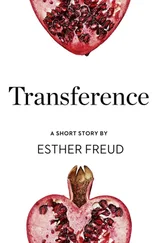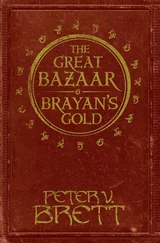In the dark, now older, now retired, still in the house, they murmur: “She was a pretty girl, wasn’t she?”
“Curls. Yes, yes. Got in trouble with the boys early on, didn’t she?”
“What do you think the G stands for?”
“Gina? Gertrude?”
“Georgette?”
“Never came back here ever.”
“No, never heard of it. Family acts like she never existed.”
“Well. She was a disgrace, I suppose.”
“Yes, well.”
They both think of her. Sleep comes slowly. Now the captain coughs and twists. Age and too much time on land have made him restless, a man who was never restless, a man who had always slept the unmovable sleep of beached whales, now tossing and muttering, waking with sweat-wet hands, afraid. Now he dreams of drowning. And the captain’s wife stares at the ceiling in the dark and thinks of leading a child, Rachel Larsh’s child, an angry boy in new leather shoes, through the house, pointing out the captain’s trophies, the swordfish he caught during that trip to the Pacific (on the wall in the library), the hidden staircase behind the summer kitchen, and here, see, look, beneath the vase he brought back from St. John, your mother’s initials. And the boy not curious, shaking free his hand.
THEY FOUND HIM the same afternoon they found her (two days after her husband discovered her car in the parking lot of a supermarket in Galesburg). He was leaning against the ruins of an old corncrib, still weeping, his head between his knees. He’d broken both his thumbs in a rusty hinge. When they bandaged them up at the jail in Aledo, his thumbs were black.
Out near New Boston, Illinois, floods are so common that the land is soggy no matter what the season. Even so, people say the Mississippi moves slower in their part of the western edge of the state. To honor their dead towns, they say. Industry, except of course John Deere (you can’t kill John Deere, people say), has long since moved south, and even north, anywhere but here. In 1958, the National Park Service described New Boston as “a charming old town originally laid out by Abraham Lincoln when he was junior surveyor at New Salem.” Now a single store remains open on Center Street, a Casey’s Minimart, and if you want a tour of the museum (on the first floor of what used to be the Lincoln House Hotel) you can call one of two numbers written on a cardboard sign tacked to the front door and ask for either Debbie Shambrock or Eleanor Lloyd. On the river, at the end of the town pier, there’s a floating gas station for fishermen where you can buy Pepsi, ice, and lures. In the other direction, along route A-27 where it intersects the Great River Road, are the remains of an old Greek-revival mansion, grass growing up between the steps, the pillars gnawed like tossed-away corncobs.
Lock Dam Road is a gravel road that looks like many others northwest of town. It is not marked and the name appears only on the most detailed regional map, a map the sheriff had to consult before he informed the press where the body was found. He couldn’t have just said they found her in a hollowed-out tree in a field on the land Steve Matovic used to rent before he split up with his wife and stopped farming altogether. That wouldn’t have meant much to the out-of-town press. Unlike the other roads, which all fork, Lock Dam Road holds and eventually hits the river. At the end of it is Lock Dam #3, which the state stopped operating in 1975. The tree, which is about a mile from the river, stands alone and must for years have been a favorite target of the lightning that did finally get it. One jagged portion remains, blackened, a charred finger pointing up. People say it looked like a grave even before it happened. High school kids for years used it as a dump for empties.
Mostly it was the old naggy curiosity that made her drive out there. When she was a kid she would leap on her bike at the sound of a siren anywhere near her house and investigate until she found the fire trucks or ambulance or cops. And then sometimes she’d wait an hour or so for something to happen, even though usually it didn’t amount to much more excitement than the paramedics wheeling out an already stiff old cooter or, at other, rarer times, someone younger. The only noise the rattle of the gurney’s crazy wheels across the asphalt and the jounce of the fluid bottles above the head of the silent main event. She drove south to New Boston from a suburb of Davenport, Iowa. She crossed the river at Muscatine. Her name was Janet, and she was a senior in high school, already accepted into college at Ames. She had her own car, so she didn’t have to tell anybody where she was going. And if anybody asked, she would have lied, because what would people have thought if she told them she wanted to see the tree where they found the teacher that got hacked, the mother with the three kids. Her friends would call her completely morbid; her mother would call her lazy. She’d read about it in the Quad Cities paper. EX-STUDENT HELD IN TEACHER MURDER. Travis Oarly. No criminal record. Eight years ago he’d been a student in her class. He was known as being maybe a little slow, but never violent. The paper quoted a neighbor, who said he’d never so much as spat on a plant all the eighteen years she’d known him. “Travis was always gentle. He never said much after his mother died, but even so he smiled at you. I’m floored by this. A thing like this you can’t get yourself to believe.” The corncrib where they found him was three hundred yards away from the tree. They found his truck in a creek a mile southwest. And then there was that stuff about the thumbs, which the paper said the police were still investigating. The article quoted the county public defender, who hinted, though he insisted it was far too early to speculate, that the condition of his client’s thumbs “indicates the strong possibility of third-party involvement.”
It was after 8:30 on a Wednesday night when she stopped at the Casey’s for directions. The woman behind the counter had a kind, supple face and wiggly arms. When Janet pushed the door open, the chimes thwacked the glass and the woman appeared to wake from a nap she was taking while standing. Janet could tell from the way her jaw drooped a bit and then tightened that she was curious why a girl not from around here would want to go poking around Lock Dam Road at night, especially after what had happened out there not even ten days ago. But she kept it to herself, only gave directions as best she could. Janet nodded vigorously and pretended to understand. Then she bought a Coke and a chocolate doughnut and thanked her a lot. It was still light, the second week of May, but as she walked back to the car Janet could feel the heat of the day leaving quickly, as though draining into the river she could feel lurking down there at the end of the street.
She kept getting lost, driving to the last houses of dead ends. Kept backing up into long gravel driveways and turning around and trying other roads. It took another half hour before she found it, and even then she wasn’t sure the road kept going — twisting, then sharp-angling — four miles or so. The tree was easy to spot, all alone out there. By this time it was less dark than simply ash-colored, with streaks of white-gray light low in the trees that hid the river. She parked on the edge of the road and walked across the boggy ground. There was a strand of yellow POLICE LINE DO NOT CROSS tape bunched up on the ground. It looked like a leftover streamer. Other than that, no sign of what had happened there, only bootprints turned puddles in the mud. Standing before the tree, she thought about how perfectly innocent places take on meanings they don’t deserve: the empty lot where her grandfather’s store burned down (the rumors that he set the fire himself made the black cement remains of the basement even worse to look at); the spot near the Dumpster behind the granary where her sister did a bump of crystal meth and then almost got raped by Derrick Fanton’s brother Ty; the intersection of Gurlick and Seventh, where Maury Ravel got squashed. She figured the tree used to be an elm, but she really didn’t know. Maybe it was a sycamore. She’d always meant to get a tree book, but whenever she went to the library for things like that, she always ended up getting distracted by the towers of newspapers in the periodical room. She knocked on the bark and it felt wet against her knuckles. Inside, there was soil mixed with clean white gravel. With the bark pointing to the sky like that, the tree looked like a huge high-back dining-room chair. The opening wasn’t facing the road, so whoever found the teacher’s body must have walked around from the back and looked in. She laughed at herself for being Nancy Drew and for not being afraid even though it was getting darker now. God knows, everybody would think she was nuts, but all this is is a tree. And this is only darkness. Her father, who had been afraid of everything, once told her there was so much more to be scared of than darkness, namely people. People at night, people in the early afternoon, people who laugh too much. People who don’t tuck in their shirts. Her father terrified of everybody else, but when it came down to it, what had killed him started with him, spreading up from his pancreas.
Читать дальше












